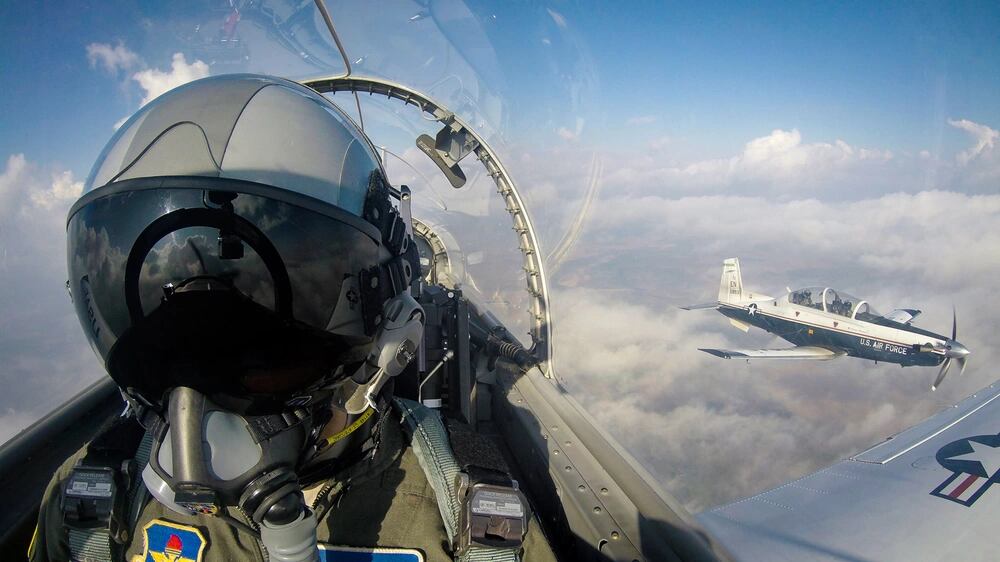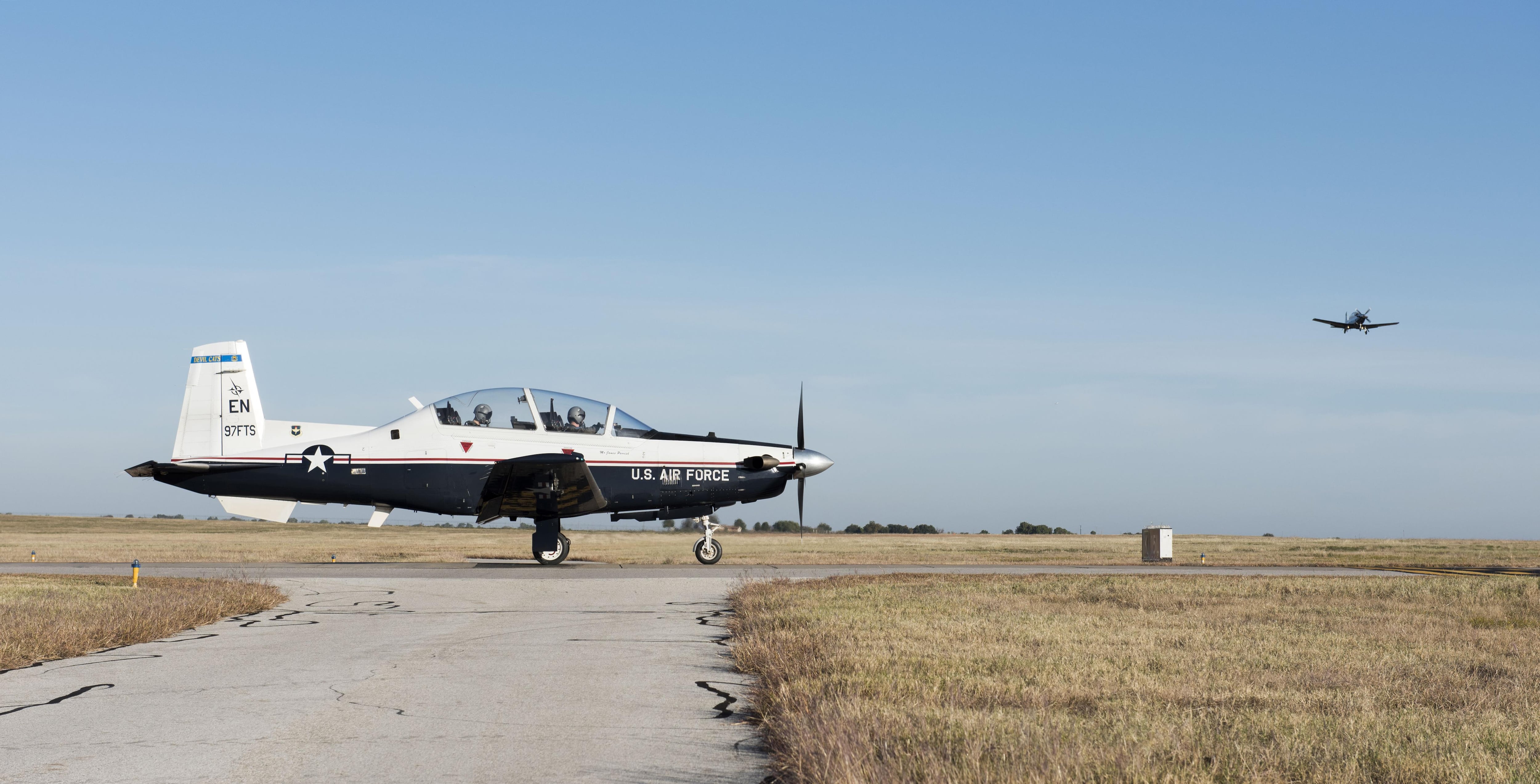Editor’s note: This story was updated May 14 6:53 p.m. Eastern Time with additional information, including the pilot’s name.
A U.S. Air Force instructor pilot died from his injuries after his plane’s ejection seat activated while on the ground Monday at Sheppard Air Force Base, Texas.
Capt. John Robertson of the 80th Operations Support Squadron died early Tuesday morning after being severely injured when the ejection seat of the T-6A Texan II aircraft he was sitting in activated during ground operations, the base said in a Tuesday release.
“This is a devastating loss for Captain Robertson’s family and loved ones, and for the entire 80th Flying Training Wing,” Col. Mitchell Cok, the acting wing commander, said in the release. “Captain Robertson was a highly valued airman and instructor pilot. Our deepest condolences go with all who knew and loved him.”
“We are thankful for the M1 maintenance team who immediately provided live-sustaining care, and for the heroic efforts of the security forces, fire and medical personnel here on base and at United Regional Hospital,” Cok added. “Their efforts allowed time for Captain Robertson’s family to be at his side when he passed.”
A student who was also sitting in the plane did not eject and was not injured, Sheppard spokesperson George Woodward told Air Force Times Tuesday.
RELATED

The service has not confirmed whether the aircraft was moving at the time of the accident, Woodward added.
An interim safety board investigation was convened immediately following the incident, and a full Air Force safety investigation board is expected to be in place later this week, according to Tuesday’s release. The board will release its report when the investigation is complete.
The 80th Flying Training Wing is home to the Euro-NATO Joint Jet Pilot Training Program, a key educational pipeline that has supplied new combat pilots to the transatlantic alliance for over 40 years.
The wing has trained more than half of all U.S. Air Force fighter pilots, as well as aviators hailing from Canada, Denmark, Germany, Greece, Italy, the Netherlands, Norway, Portugal, Romania, Spain, Turkey and the United Kingdom.
The joint program has churned out more than 8,000 pilots since it began in 1981 — a mission that has taken on new urgency as NATO bolsters its defenses amid Russia’s invasion of Ukraine.
The Air Force did not answer Tuesday whether it plans to pause operations to inspect ejection seats across its fleet of nearly 450 T-6 planes, a move that could further slow graduations in the service’s already-struggling pilot training enterprise.
The two-seat, turboprop Texan IIs are used to teach basic flying skills to new Air Force and Navy pilots before they progress to more advanced airframes.
“The interim investigation board is in direct contact with 19th Air Force and [Air Education and Training Command] leadership,” Woodward said. “Any decisions regarding fleet-wide operations will be made by the AETC commander.”
This week’s fatality comes almost two years after the military grounded hundreds of training aircraft and other airframes amid concerns that their ejection seats would not fire correctly when needed.
Martin-Baker — which builds the ejection seats used on the T-6, F-35 Joint Strike Fighter and more — had discovered defects in some of the cartridges that explode to propel an aviator out of the cockpit.
It’s unclear whether the latest accident is related to those troubles. Martin-Baker did not immediately respond to a request for comment.
Major accidents in the T-6 are rare; this week’s fatality marks the Air Force’s first death in a Texan II since 2004, according to the Air Force Safety Center. The most recent accident that destroyed an Air Force T-6 occurred in 2019.
The pilot is the ninth airman killed in an aviation-related mishap so far in fiscal year 2024.
This story was updated May 15 at 10:50 a.m. ET to clarify that the fatality is the Air Force’s first death in a T-6 since 2004.
Rachel Cohen is the editor of Air Force Times. She joined the publication as its senior reporter in March 2021. Her work has appeared in the Washington Post, the Frederick News-Post (Md.), Air and Space Forces Magazine, Inside Defense, Inside Health Policy and elsewhere.





